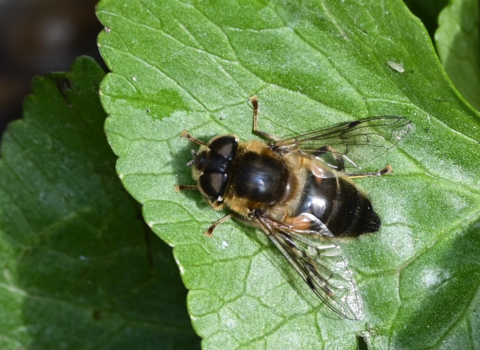
Jim Stevenson
Drone-fly
With brown-and-orange markings, the Drone-fly looks like a male Honeybee, but is harmless to us. This mimicry helps to protect it from predators while it searches for nectar in gardens and urban areas.
Scientific name
Eristalis tenaxWhen to see
January to DecemberSpecies information
Category
Statistics
Length: 1.0-1.2cmCommon.
